Climbing plants are a beautiful addition to any garden. From fragrant morning glories to juicy tomatoes, climbers can transform bare walls, fences, and garden beds into vertical wonders of greenery and blooms. However, these plants need support to grow healthily and flourish. That’s where a garden trellis comes in—a structure that guides your plants upward, adds dimension to your space, and can even become a striking decorative element.
The best part? You don’t need to buy expensive trellises from stores. With some creativity, basic materials, and a few tools, you can build easy DIY garden trellises that are both functional and stylish. In this article, we’ll explore simple DIY trellis ideas, step-by-step instructions, and tips to help your climbing plants thrive.
Why Use a Garden Trellis?
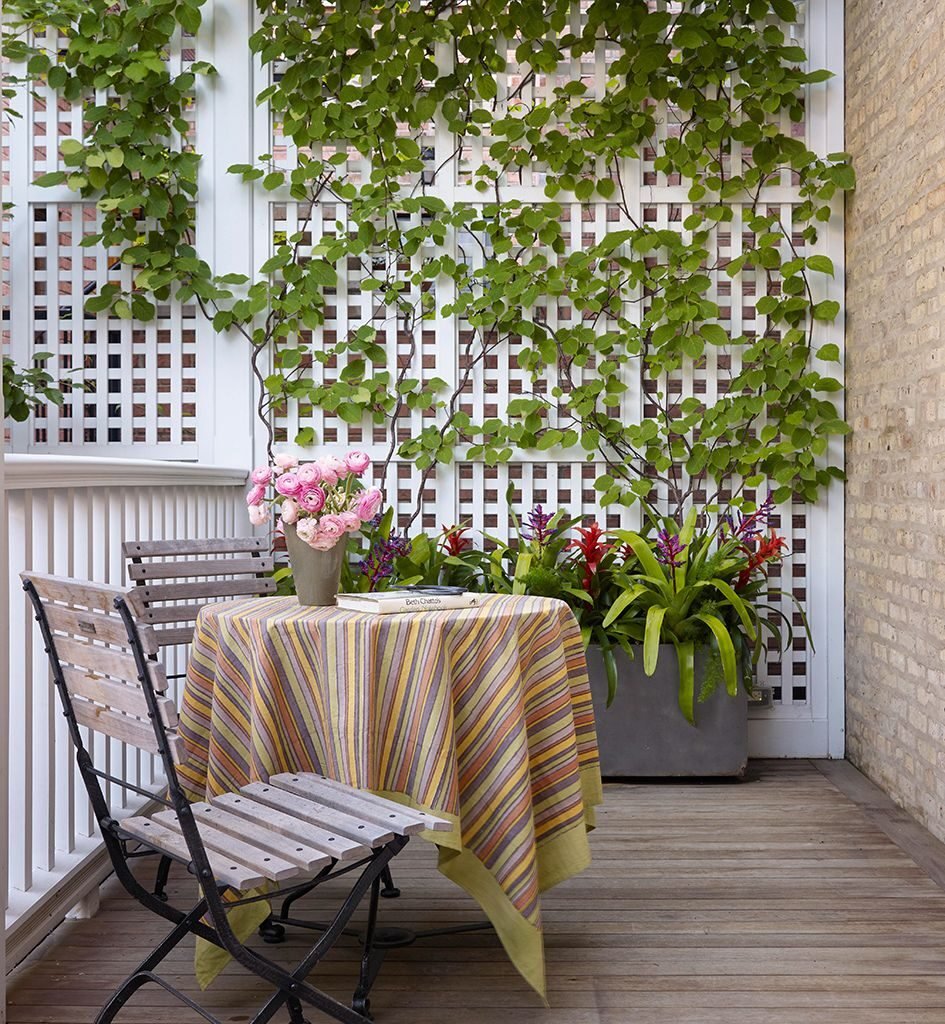
A garden trellis isn’t just a support—it offers multiple benefits:
- Healthier Plants: Supports vertical growth, reducing overcrowding and improving air circulation.
- Maximizes Space: Ideal for small gardens or balconies by allowing vertical planting.
- Aesthetic Appeal: Adds structure, design, and visual interest to your garden.
- Easy Harvesting: Keeps fruits and vegetables like beans and cucumbers off the ground.
- Pest Control: Elevating plants reduces exposure to soil-borne pests and diseases.
Whether you’re growing flowering vines, edible plants, or decorative greenery, a trellis helps you make the most of your garden space.
1. Classic Wooden Lattice Trellis

A wooden lattice trellis is timeless and works beautifully with both flowering climbers and vegetables. It’s a straightforward DIY project and can be attached to walls, fences, or stand alone in garden beds.
Materials Needed:
- Wooden lattice panel (pre-made or cut to size)
- Wooden stakes or posts
- Screws or nails
- Drill or hammer
Steps to Build:
- Place stakes or posts into the soil at the desired location.
- Attach the wooden lattice panel to the posts using screws or nails.
- Ensure the structure is stable and upright.
- Train climbing plants to grow along the lattice using soft ties or garden twine.
Tips: Use rot-resistant wood or treat with outdoor sealant to increase durability. Plant flowers like clematis, sweet peas, or morning glories for a burst of color.
2. Rustic Branch Trellis
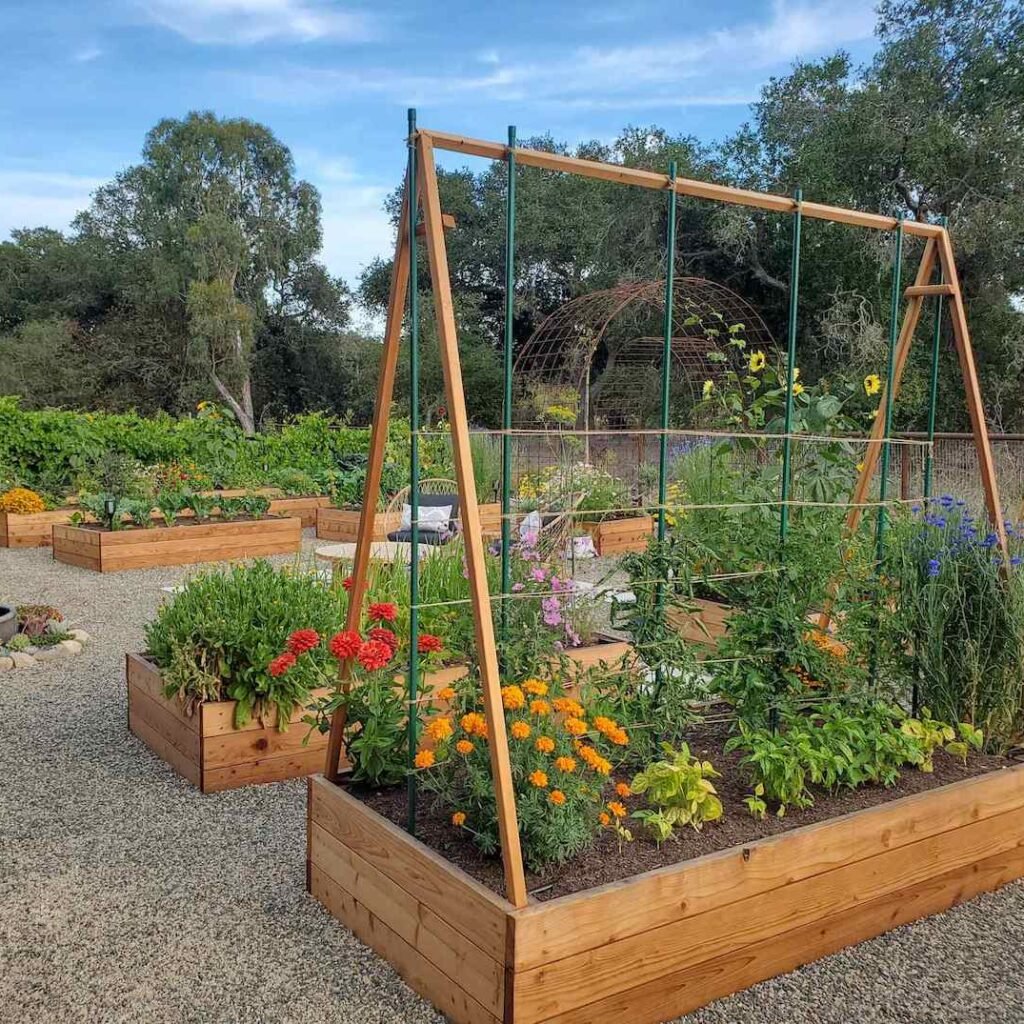
For a natural, rustic look, create a trellis using branches or twigs collected from your yard. This design blends seamlessly into woodland gardens or cottage-style landscapes.
Materials Needed:
- Strong, straight branches or twigs
- Twine or wire
- Garden stakes
Steps to Build:
- Arrange three or four branches in a tripod shape for a conical trellis, or create a rectangular frame with branches for a wall-style trellis.
- Bind intersections with twine or wire for stability.
- Insert the base of the branches into the soil securely.
- Train your climbing plants to wrap around the branches as they grow.
Tips: This design is perfect for beans, peas, or small flowering vines. Over time, the branches weather naturally for a charming, rustic aesthetic.
3. PVC Pipe Trellis
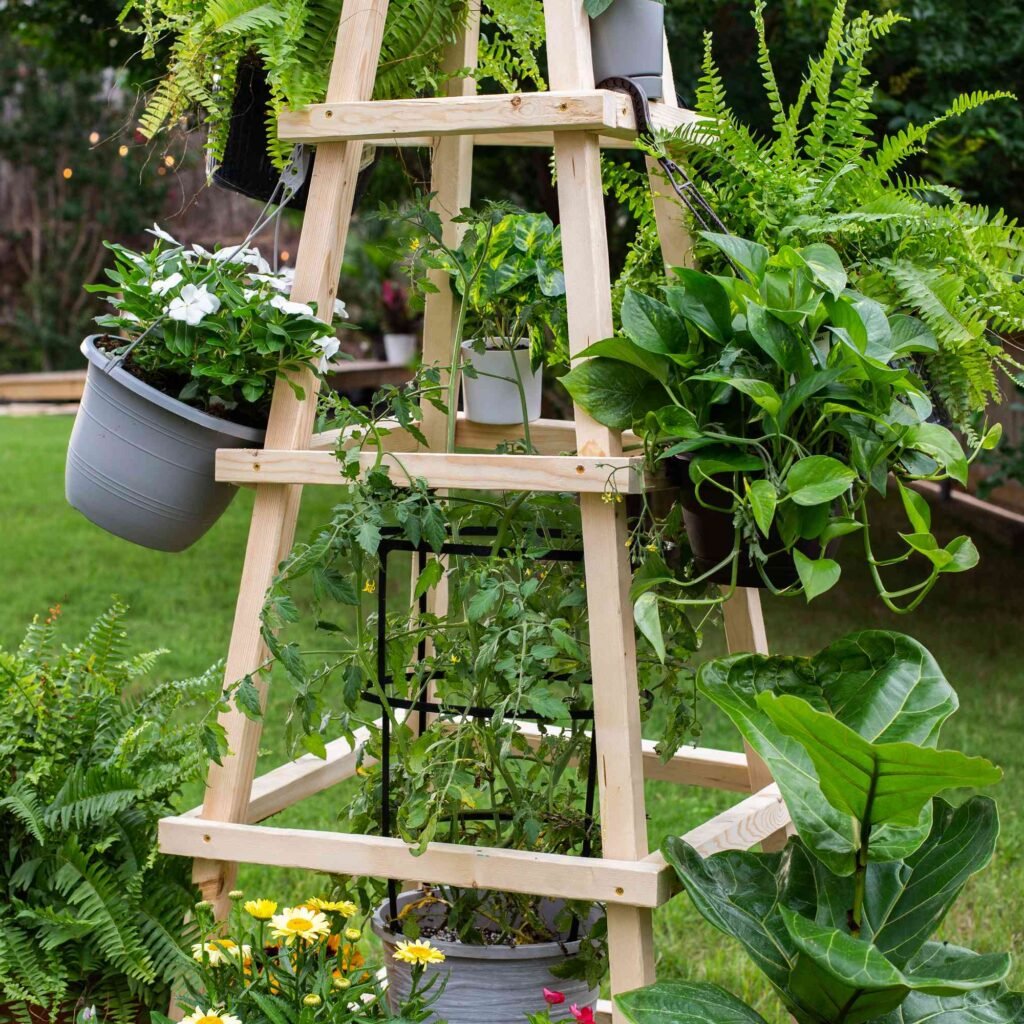
PVC pipes are lightweight, affordable, and versatile for DIY trellises. They’re ideal for vegetable gardens or balcony containers because they can be moved easily.
Materials Needed:
- PVC pipes
- PVC connectors (T-joints or elbow joints)
- Zip ties or garden clips
- Saw (if cutting pipes to size)
Steps to Build:
- Cut PVC pipes to the desired height and width.
- Assemble the frame using PVC connectors, creating a rectangular, triangular, or teepee-shaped structure.
- Secure pipes in the ground, adding extra support if necessary.
- Attach a net, garden twine, or string between the pipes for the plants to climb.
Tips: PVC trellises are low-maintenance and ideal for fast-growing vegetables like cucumbers, tomatoes, or peas. You can also spray-paint PVC pipes to match your garden décor.
4. Hanging Trellis for Vertical Containers
If you have limited garden space or grow plants in containers, a hanging trellis is a perfect solution. It can be mounted on walls, fences, or balcony railings.
Materials Needed:
- Wooden frame or metal grid
- Hooks or wall anchors
- Twine or small clips
- Container plants
Steps to Build:
- Secure the frame or grid to the wall using hooks or anchors.
- Install twine, string, or clips in a crisscross pattern if desired.
- Plant climbing plants in pots below the trellis and guide their growth upward.
Tips: Perfect for ivy, climbing roses, or trailing vegetables like cherry tomatoes. Hanging trellises save floor space while adding vertical greenery.
5. A-Frame Trellis for Easy Access
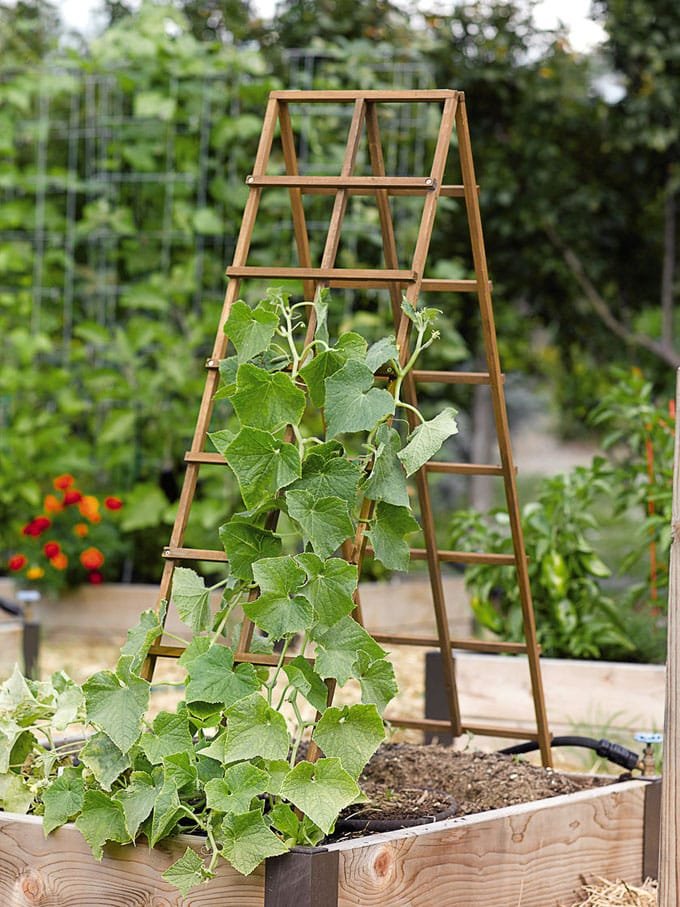
The A-frame trellis is both functional and attractive, making it ideal for vegetable gardens. Its triangular shape allows easy access to plants from both sides.
Materials Needed:
- Wooden planks or bamboo poles
- Screws or nails
- Drill or hammer
- Twine or netting
Steps to Build:
- Form two identical rectangular frames and connect them at the top to form an A shape.
- Secure the frames in the soil so the structure is stable.
- Attach twine or netting horizontally or diagonally for plant support.
- Train climbing plants to grow along the twine.
Tips: A-frame trellises work well for cucumbers, beans, and peas. They can also serve as a decorative centerpiece in flower gardens.
Training and Maintenance Tips
Once your trellis is in place, follow these tips to ensure healthy plant growth:
- Guide Plants Early: Start training plants when they are small to avoid tangled growth.
- Use Soft Ties: Avoid damaging stems by securing vines with soft ties, string, or garden clips.
- Prune Regularly: Remove dead or excess foliage to encourage better air circulation.
- Check Stability: Ensure the trellis remains sturdy, especially after heavy rain or strong winds.
- Water at the Base: Direct watering to the soil around the roots, avoiding excess moisture on leaves to prevent disease.
Benefits of DIY Garden Trellises
- Cost-Effective: Use affordable materials like PVC, bamboo, or recycled wood.
- Customizable: Build trellises to fit any garden size, plant type, or style.
- Enhances Garden Aesthetics: Adds vertical interest, turning functional structures into decorative elements.
- Improves Plant Health: Supports climbing plants, reducing disease and pest problems.
- Flexible Designs: Can be freestanding, wall-mounted, or even movable for seasonal needs.
Conclusion
DIY garden trellises are an easy and rewarding way to support climbing plants while adding beauty and structure to your garden. Whether you choose a classic wooden lattice, a rustic branch trellis, a lightweight PVC structure, a hanging vertical trellis, or a triangular A-frame design, these ideas are simple to build and highly effective.
By selecting the right materials, customizing designs to your garden’s needs, and maintaining your plants properly, you can create stunning vertical spaces that showcase flowers, vegetables, and greenery in style. Trellises not only enhance plant health but also transform your garden into a visually captivating and organized outdoor space.
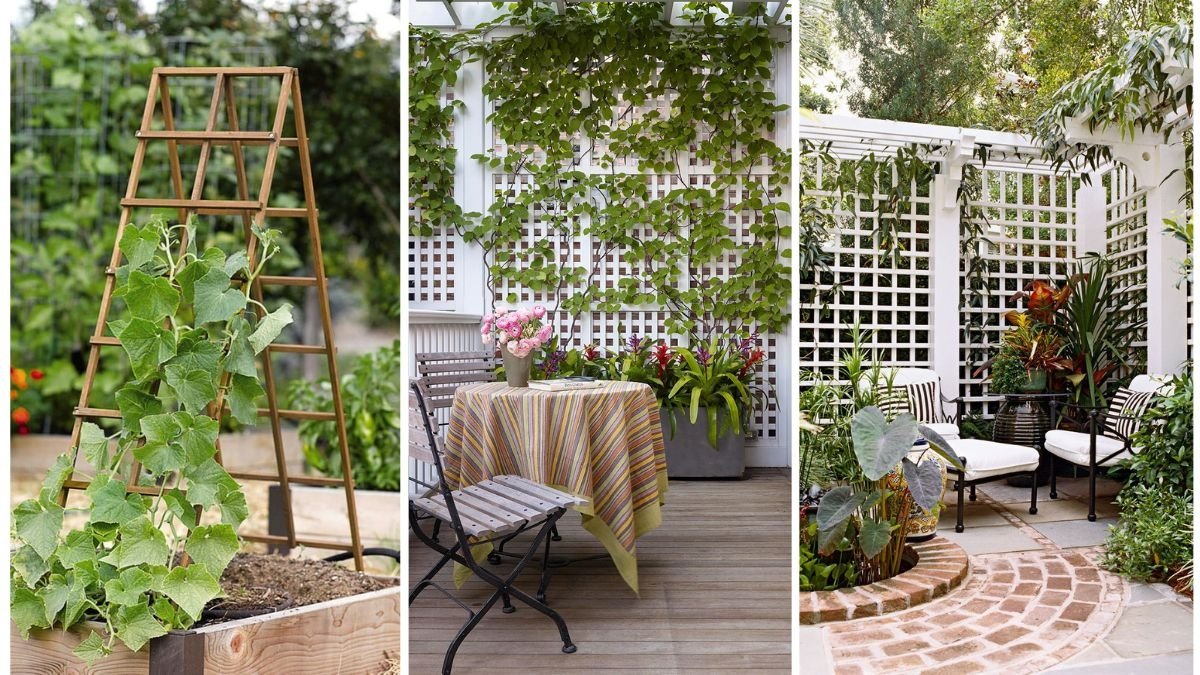
Leave A Comment